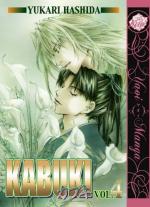|
This section contains 11,964 words (approx. 40 pages at 300 words per page) |

|
SOURCE: Ortolani, Benito. “Kabuki.” In The Japanese Theatre: From Shamanistic Ritual to Contemporary Pluralism, pp. 153-99. Leiden, Netherlands: E. J. Brill, 1990.
In the following excerpt, Ortolani provides a critical overview of Kabuki's historical and socio-political development, its use of supernatural elements, and its major figures and works, including the playwright Chikamatsu Monzaemon and the play Chūshingura.
Background of Kabuki and Jōruri
The history of Edo's theatrical splendor under the Tokugawa regime (1603-1868) has been the subject of several studies by Japanese and western authors, especially since World War II. The wealth of information available makes it possible to reconstruct a rather accurate picture of the complex and fascinating kabuki and jōruri worlds. Especially important are those studies that relate these genres to the phenomenal development of the new middle class in Edo and Osaka, the big Japanese cities that shared with Kyoto, and eventually took...
|
This section contains 11,964 words (approx. 40 pages at 300 words per page) |

|


